LEADERSHIP DEVELOPMENT
Introduction
Leadership provides subordinates with the necessary direction and guidance to improve organizational performance. To comprehend its fundamental ideas and drawbacks, the study analyzed a variety of leadership theories, including autocratic, transactional, and transformational theories. Transactional leadership, which uses extrinsic motivation to drive workers to accomplish predetermined goals, gives rise to transformational leadership. The idea’s development has given way to an in-depth understanding of the organization’s leadership style and sustainability. While completing this programme, I encountered a few problematic situations that helped me understand more about my leadership talents and decision-making process. Gibb’s reflective model emphasizes the lessons learned from contradictory circumstances, strengthening the identification of leadership qualities.
I used the Gibbs reflection model to examine this module’s experience and evaluate my strengths and weaknesses. Later, I also took a leadership test in which I scored 62and I found various areas to improve my decision asking and leadership skills along with communication capabilities. I have analyzed the capabilities with the help of the Self-leadership theory. It has helped me acknowledge my weaknesses and develop a personal leadership plan. I have created a detailed leadership plan for 18 months using SMART objectives to enhance my existing skills. It has helped me determine my key objectives in developing my leadership skills and activities, which can be appropriate for improving my competencies. It has also provided outcomes which can be used as a measure of success for the initiatives taken.
A critique of leadership theory
Transactional leadership theory
The approach “Transactional” has been designed to achieve an organization’s goals by encouraging and providing for the needs of the following workers. Management provides direction and establishes specific ground rules to reach the target with skills (Northouse, 2020). Leaders connect the organization’s goals with rewards and set SMART goals, which refer to specific, measurable, attainable, realistic, and timely goals. Authorities monitor the performance and keep looking for required changes to avoid repeated mistakes. Sometimes leader intervenes if the set goals do not meet and penalizes them for low performance (Cairns et al. 1998). There are several advantages, as the leaders motivate team workers to increase quality and quantity. The approach increases the chances of achieving goals which are accessible and achievable for individuals of all levels. Clear command from the higher authorities eliminates confusion and enhances productivity (Shetach, 2012). The leaders following the theory significantly focus on productivity and reducing costs.
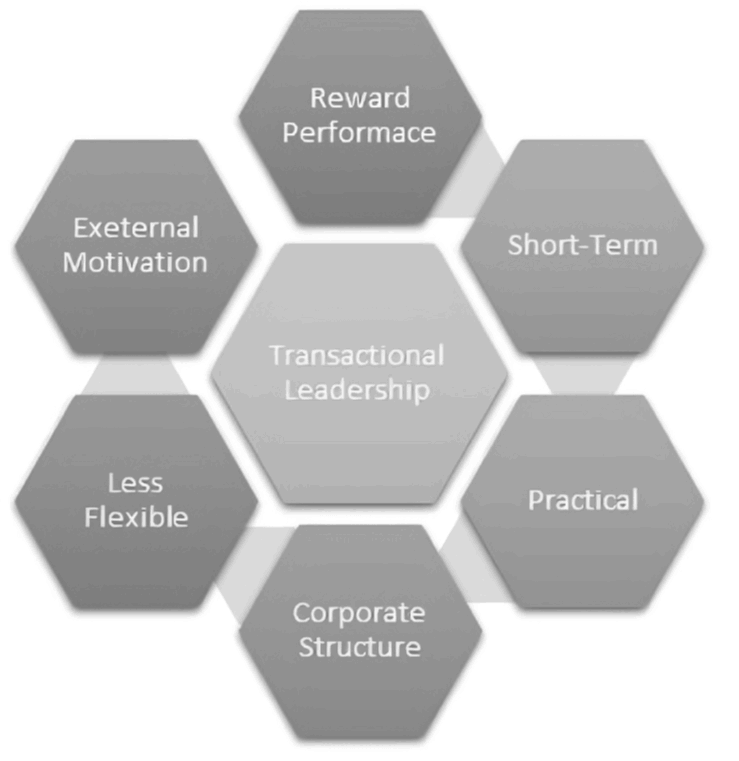
Figure 1: Transactional leadership
(Source: Germain, 2012)
The idea does not require specific training and is easy to implement. The workers in “transactional leadership” rarely face any misinterpretation, making the instructions easy to implement (Germain, 2012). On the other hand, the “transactional leadership” theory has some irreplaceable rules and regulations that require following. Workers with creative minds find it difficult to work in this environment as creativity works only under freedom. These leaders do not compromise with “rules” and “regulations”, which creates situations where innovation decreases (Thomas et al. 2017). A company strictly following this approach faces difficulty during any sudden empty place of a leader, as the following workers become clueless during the absence of leadership (O’Reilly and Chatman, 2020). I observed the “American” “multinational” information technology-based company “Hewlett Packard Enterprise” uses the “transactional leadership” approach. The company is also known for its extensive use of exceptional management skills, which gave them noticeable success.
Transformational leadership theory
The leaders who belong to “transformational leadership” ideas are the most influential in professional sectors. Leaders are capable of abilities that transform their followers’ and workers’ interests for the betterment of their company (Drucker, 1999). The group authority’s charisma motivates and reshapes workers’ energy to enhance the organization’s development. Transformational leaders keep looking for new ideas and solutions to simplify workers’ tasks, motivating and encouraging their followers (Thoroughgood et al. 2012). The theory has some advantages, as the leaders and workers work unitedly and struggle for common goals. The organization’s growth is remarkably noticeable as the entire workforce works in the same direction as the transformational leader (Cranmer et al. 2019). The approach reduces the turnover rate by encouraging and motivating, which connects employees personally with the company. Firms following such leadership theories can accept changes quickly, which seems possible by their leader’s traditional skills and properties. [Refer to Appendix 1]
On the contrary, an expansive vision of unity on the practical ground is challenging, as there are employees who need to be guided by a leader on their given tasks. The leaders put in a lot of encouraging and motivating efforts for employees and always empathize company’s great value, which creates pressure on workers (Gronn, 2003). Continually learning about the company’s pride and success can leave employees demotivated and burnout state. I believe transformational leadership is an excellent way to encourage team members, as I have followed this approach during a group project. The theory helped me tackle and encourage fellow mates during critical situations.
Autocratic leadership theory
“Autocratic leadership” is an authoritarian model where a single firm member gives instructions, controls the entire workforce and takes unnoticeable employee feedback. This kind of leader takes the initiative in what is best for their and their companies’ interest, taking fewer ideas from the followers with the expectation that they will follow the same (Uhl-Bien et al. 2014). The leaders set a common goal for their benefit and introduce thereat and punishment to achieve targets and continuous growth (Gupta et al. 2004). The theory introduces the “quick decision-making” idea as an advantage, as the leaders always have the final words. The instructions are followed by workers and reflected as handy in a critical situation. The clear and unavoidable rules allow constant production, as the employees know what they are expected to do and what is not.
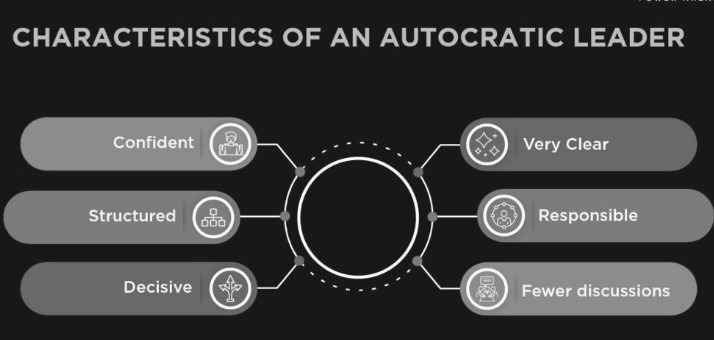
Figure 2: Autocratic leadership
(Source: Hopkins and Scott, 2016)
On the other hand, an “autocratic leader” decreases the trust and morality between staff and the company. Taking the lowest possible feedback makes them feel unheard and ignored, negatively affecting the organization’s progress (Hopkins and Scott, 2016). The company’s dependency on the leader gets too high, which influences the progress without a leader. Following this approach can endanger the company during a leader turnout moment (Alonso-Almeida et al. 2016). I think the idea is similar to dictatorship, which I do not think is healthy. However, I noticed that it sometimes benefits companies like “McDonald’s”, as they can maintain a healthy chain of command.
An evaluation of a problem-based event
I have encountered a few challenging events during the completion of this module which has facilitated my learning regarding the decision-making process and leadership capabilities. Gibb’s reflective model helps accentuate the learning from conflicting situations enhancing the determination of competencies regarding leadership (Nübold et al. 2020). The six phases of the Gibbs reflective cycle carefully examine each person’s experiences to produce an action plan. Description, Feeling, Evaluation, Analysis, Conclusion, and Action Plan are the six steps of this approach.
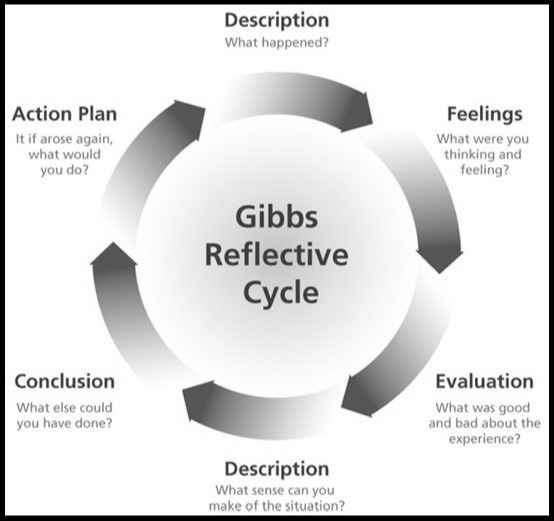
Figure 3: Gibb’s Reflection model
(Source: Nübold et al. 2020)
Description
I have worked with various individuals during this module and interacted with them daily. The individuals often belonged to different cultural backgrounds, and I have encountered significant communication challenges. I saw varying opinions about the project plan while working on the group project with other team members. Conflicts between team members have become more frequent due to the “cross-cultural group,” which is a significant drawback (Einarsen et al. 2007). A pessimistic scenario has resulted from the disparity in perception. Because we have had a lot of difficulties making decisions during the project, the differences of opinion have raised stress. However, I’ve learned about various working methods thanks to my experience in a “cross-cultural group.” It has helped me understand how culture affects how people act and think. I also think effective leadership and communication are the keys to resolving conflicts among team members.
Feeling
I’ve had a great time working on the project with my collaborators and making a contribution. I’ve been able to develop a close relationship with my team colleagues. They have greatly aided in my knowledge, and I have depended on them to clear out any confusion I encountered along the assignment. I have, nevertheless, detested confrontational circumstances when people frequently challenged my beliefs. A more assertive leadership approach from the project’s initiation could have resolved our issues more adequately.
Evaluation
I have been able to interact with an individual who has distinct cultural beliefs and opinions. Their work process is very different, which displays a significant impact of backgrounds and cultural values on individual perspectives. I have also had a significant scope of learning about various concepts when collaborating with others. However, I had a bad experience during the team discussion process. Initially, I ran into several circumstances when we disagreed on how the projects should be carried out. Conflicts are frequent in “cross-cultural teams” because of the people’s varied behaviours and perspectives (Lipman-Bluman, 2005). Conflicts also lengthened the study’s timeframe and decreased the group’s effectiveness during the endeavour (Chong et al. 2018).
Analysis
I decided to hold a meeting and address the various opinions of each person because the tensions were getting worse. It has cleared up the team members’ conflicts and misunderstandings. One fundamental way to understand the participants’ varied opinions and attitudes was through the debate (Mathieu et al. 2014). We narrowed our differences and reached a consensus thanks to the procedure. I think I have adequate leadership skills as I have decided that we needed to hold a meeting, and it shows adequate initiative on my part.
Conclusion
I believe that “cross-cultural teams” are pretty effective since they can offer creative ideas. As a person may watch how others work, it also aids in developing “problem-solving skills”. Participants work through their differences through patience and respect for one another (Dove, 2019). As I have already noted, acknowledging team members is a crucial component of teamwork that creates a positive atmosphere. Transformational leadership techniques are appropriate for group projects as they focus on the participants and their abilities. It helps the leaders accentuate the competencies of the individuals in group projects resulting in adequate results.
Action plan
I will talk about the beginning of any collaborative projects moving forward. I will prod the participant to go into further detail about their thoughts and thought processes, explaining the rationale for the details. It will make it easier to appreciate other people’s viewpoints (Fletcher, 2004). Although I won’t minimize the other participants’ contributions, I will share my thoughts on the proceedings. Additionally, I will foster a supportive environment to encourage everyone to share their ideas for team initiatives. In my opinion, I can take the positive of a leader with the support from my teammates to establish a fair process for all the participants with the use of transformational leadership techniques. Because each person on a “cross-cultural team” has a unique perspective and attitude, respect is essential (Padilla et al. 2007). To encourage development and reduce mistakes throughout the process, I will also set up an effective monitoring and control system for the project.
An audit of your strengths and weaknesses
Self-leadership is a process of identifying oneself and the desired competencies, which helps people establish an appropriate process for enhancing their skills. The definition of “Self-leadership” is based on the three primary theories; “self-determination”, “self-control”, and “social-cognitive theory” (Sankowsky, 1995). Self-control can be referred to as “self-management” and “self-regulation” and informs the “repetitive process” of determining an appropriate and ideal end state. It generally contrasts with the present state highlighting its differences and helping in taking proper actions to lessen the distinction between the two (Carucci, 2018). It is vital to remember “self-leadership” and “self-management” are frequently used to direct similar management processes.

Figure 4: Self-leadership theory
(Source: Gloor et al. 2020)
However, Self-management only informs the inwardly processed “control” and “execution of activities”, which makes it a high-importance but a limited element in self-leadership (Gloor et al. 2020). The choice regarding the task and the reason behind making a proper choice are regulated by external factors (Cosans and Reina, 2017). On the other hand, “Self-leadership” indicates “value alignment”, choices which are regulated by the internal values of an individual and proper execution of the chosen activity (Graen, 2006). I have displayed adequate self-management, as I have rarely doubted my abilities. I am also inclined toward understanding the feelings of others in case they have been upset about something. It highlights essential self-leadership skills.
The “Social-cognitive theory” highlights the interaction between our thoughts, “socio-political environment”, and behaviour. The “Self-determination theory” depicts the correlation between purposeful life and motivation (Elias, 2008). I have been able to make decisions in a team working on projects which has been highly beneficial for the group. I have also asserted the need for a meeting when conflicts among the members have delayed our project. I have tried to create increased engagement for the team members, which has been successful in the long term. However, I need to improve my ability to visualize the outcome of the decisions, which can help eradicate several common challenges in group projects. In the first stage, I thought the group project’s success depended on the participants’ skills. As a result, I have asserted my best ideas to complete the project effectively. I have also analyzed others’ ideas and compared them with mine to highlight their disadvantages. [Refer to Appendix 2]
In my opinion, I need to understand the point of view of others before comparing them to my ideas, and it can help me understand others. Communication is the primary objective in group projects, where people often work with others from different cultures and traditional values (Painter, 2019). I have been able to communicate with others substantially. However, I have not been able to understand their cultural impact on their opinions and their attitudes. I have fair verbal communication skills as I have been able to interact with the other participants during the projects. Non-verbal skills help people understand individuals’ underlying behaviour and attitudes (Kelley, 1988). I need to improve my non-verbal skills to improve my people management skills. Non-verbal communication can help me understand the viewpoints of others and attitudes towards tasks. It can help me create positive atmospheres in a group setting by establishing an inclusive environment. [Refere to Appendix 3]
During the group project, I was upset regarding the team conflict as individuals undermined my perspective during the discussion. It has led to disagreements in the process, and I have felt quite discontent regarding my teammates. I have been angry and criticized others, highlighting the lack of suitability of their ideas. It has informed my lack of self-management as I have facilitated further conflicts. As a result, I need to develop my self-management skills to control my emotions in a difficult situation. I have decided to practice journal writing which can help me learn from my experience and influence me to activate differently in similar situations.
Moreover, I have essential decision-making skills; however, it has not been adequate in group projects. I have failed to decide on the initial stage of the project. I need to gain insight into problem-solving competencies, which can help me make good decisions. Gaining the necessary problem-solving skills can help enhance my leadership skills, as it is essential to lead people and provide them with robust solutions during critical situations (Martins, 2018). It supports individuals’ capacity for critical thought and enhances their “problem-solving” skills, both of which have a favourable effect on the effectiveness of groups (Hardy and Maguire, 2016). Additionally, it encourages individuals to transcend conventional practises and appreciate individual differences to create an inclusive environment.
A personal leadership development plan

Table 1: SMART objectives
(Source: Self-created)
Decision-making skills
Decision-making is essential for leaders as they are often responsible for taking responsibility for the critical situation. The skill is about making decisions based on logical matters rather than emotional entities. Acquiring the skill can provide ideas that benefit associates based on the current state (Chong et al. 2018). I think the skill can be enhanced by participating in group projects, which requires making decisions beneficial for the group. Understanding the project context and making the plan, can influence individuals. The plan requires limited choices, setting deadlines, and evaluating the outcome; following this way, “decision-making” skills are expected to be improved. I assumed participating in any projects and events and providing a righteous plan are expected to measure the development of these skills. Leadership requires taking action based on the situation; the proper “decision-making” skill is only assured of having a positive outcome (Dove, 2019). A successful leader’s characteristic is identified as a person who seeks and validates data and provides resolution accordingly. I observed that the skill requires 0 to 6 months to be developed; within this time, I would successfully develop the skill.
People management
The process, including hiring, assigning, and developing skills of individuals, is known as “people management”. The person responsible for managing the hired group and people is called the people manager. Taking an initial part in different leadership management can improve the “people management” skill. The measurement of the skill is possible by understanding the capabilities of my co-worker’s characteristics (Kelley, 1988). The skill is required to maintain a group of people and correctly assign them to the field of work. A workforce’s essential requirement is managing it in the right direction to accomplish assigned tasks. In my opinion, I would require 0 to 6 months to develop “people management” skills.
Leadership Development Course
Leadership development courses are online for enhancing individuals’ leadership skills. It helps in learning various elements of leadership capabilities and management competencies in leaders, which helps them to lead a team successfully. Leadership capabilities generally contain a wide range of skills such as problem-solving, fast decision making and guiding the team members. As a result, it can help me in assessing the issues of others and analyzing the challenges of a particular situation. Through the completion of this course, I will be able to learn about various elements of leadership and techniques for engaging teammates. My improvement can be measured through my ability to provide appropriate resolutions for solving various issues. The online “Leadership Development” course will take approximately 6-12 months.
Self-management
Self-management is the process of controlling thoughts, behaviour, and emotions productively. It helps reduce the probability of conflicts in the work environment and helps make good decisions (Fletcher, 2004). I have decided to improve my self-management skills to improve my team management capabilities, which can improve my leadership skills. The improvement in self-management can be attained through the use of journal writing and the use of reflective models, which facilitate learning from experience. I can measure the improvement in self-management through the ability to identify my drawbacks and plan for further improvement. It is highly relevant for leaders as they must enhance their capabilities, inspiring their followers to be self-regulated (Thoroughgood et al. 2012). It can also help integrate the practice of transformational leadership, as transformational leaders believe in being role models for their employees. I can improve my self-management capabilities in 12-18 months using the journal writing and reflective model.
Conclusion
The study has shed light on the essentiality of leadership skills by analyzing various leadership theories and an example of their utilizations. The study examined a range of leadership theories, including autocratic, transactional, and transformational theories, to understand their core concepts and shortcomings. The “Transactional” strategy has been created to help an organization reach its objectives by supporting and encouraging the following employees. On the other hand, leaders who subscribe to “transformational leadership” theories have the most clout in the business world. Leaders can change the interests of their workers and followers for the benefit of their organization. On the other hand, autocratic leadership is an authoritative model where one business member issues orders, manages the whole workforce and receives unnoticed employee comments.
Due to the cross-cultural team that helped me learn about decision-making and leadership skills, my experience with group projects while completing this module has informed a conflicting occurrence. I have found that using Gibb’s reflective model to emphasize the lessons learned from clashing circumstances enhances the identification of leadership abilities. I used the Self-leadership theory to analyze the capacities. It has aided me in identifying my areas for improvement and creating a personal leadership strategy. I have developed a thorough leadership strategy for the next 18 months using SMART objectives to improve my current abilities. It has aided me in identifying my main goals for enhancing my leadership abilities and actions, which might help enhance my capabilities.
References
Alonso-Almeida, M., Perramonj. and Bagur-Femenias, L. (2016) ‘Leadership styles and corporate social responsibility management: Analysis from a gender perspective’, Business Ethics: A European Review, 26 pp147–161
Cairns, T.D., Hollenback, J., Preziosi, R.C., and Snow, W.A. (1998) ‘Technical note: a study of Hersey and Blanchard’s situational leadership theory’, Leadership & Organization Development Journal 19/2 pp 113–116
Carucci, R (2018) ‘When a Leader Is Causing Conflict, Start by Asking Why’, Harvard Business Review, Dec
Chong, M.P.M., Shang, Y., Richards, M. and Zhu, X (2018),’Two sides of the same coin? Leadership and Organisational Culture’, Leadership & Organization Development Journal, Vol. 39 No. 8, pp. 975-994
Cosans, C.E and Reina, C.S, (2017) ‘The Leadership Ethics of Machiavelli’s Prince’, Business Ethics Quarterly 28:3, pp275-300
Cranmer, G.A., Goldman, Z.W. and Houghton, J.D. (2019) I’ll do it myself: self-leadership, proactivity and socialization’, Leadership & Organization Development Journal, Vol. 40 No. 6, 2019, pp. 684-698
Dove, R (2019), ‘Overcoming the Male Leadership Culture’, Insight, October, Vol 22, Issue 3, p34-38
Drucker, P.F. (1999) ‘Managing Oneself’, Harvard Business Review, March-April, pp64-74
Einarsen, S., Aasland, M.S and Skogstad, A. (2007) ‘Destructive leadership behaviour: A definition and conceptual model’, The Leadership Quarterly, 18 pp 207–216
Elias, S. (2008) Fifty years of influence in the workplace The evolution of the French and Raven power taxonomy’, Journal of Management History, Vol. 14 No. 3, pp. 267-283
Fletcher, J.K. (2004) ‘The paradox of postheroic leadership: An essay on gender, power, and transformational change’, The Leadership Quarterly 15, pp 647 – 661
Germain, M., (2012), ‘Traits and Skills Theories as the Nexus Between Leadership and Expertise; Reality or Fallacy?’ Performance Improvement, vol. 51, no. 5, May/June
Gloor, J.L., Morf, M., Paustian‑Underdahl, S. and Backes‑Gellner, U. (2020), ‘Fix the Game, Not the Dame: Restoring Equity in Leadership Evaluations’, Journal of Business Ethics, 161, 497–511
Graen, G.B. (2006), ‘In the Eye of the Beholder: Cross-Cultural Lesson in Leadership from Project GLOBE: A Response Viewed from the Third Culture Bonding (TCB) Model of Cross-Cultural Leadership’, Academy of Management Perspectives, November, pp95-101
Gronn, P. (2003) ‘Leadership who Needs it?’, School Leadership & Management, Vol. 23, No. 3, pp. 267–290, August
Gupta, V., MacMillan, I.C. and Surie, G (2004), ‘Entrepreneurial leadership: developing and measuring a cross-cultural construct’, Journal of Business Venturing, 19 pp 241 – 260
Hardy, C. and Maguire, S. (2016), ‘Organizing risk: Discourse, Power and “Riskification”’, Academy of Management Review, Vol. 41, No. 1, pp80–108.
Hopkins, W.E and Scott, S.G (2016), ‘Values-based leadership effectiveness in culturally diverse workplaces’, Cross Cultural & Strategic Management, Vol. 23 No. 2, pp. 363-385
Kelley, R.E (1988) ‘In Praise of Followers’, Harvard Business Review, Nov-Dec, pp 142-148
Lipman-Bluman, J., (2005), ‘Toxic Leadership: When Grand Illusions Masquerade as Noble Visions’, Executive Forum, Spring, pp29-36
Martins, N.O. (2018) ‘An ontology of power and leadership’, Journal for the Theory of Social Behaviour, 48:1 pp83–97
Mathieu,C., Neumann, C.S., Hare, R.D and Babiak, P. (2014) ‘A dark side of leadership: Corporate psychopathy and its influence on employee well-being and job satisfaction’, Personality and Individual Differences, Vol 59, pp83-88
Northouse, P.G., (2020) Introduction to Leadership Concepts and Practice, Fifth Edition, Sage:LA
Nübold, A., Niels Van Quaquebeke, N. and Hülsheger, U.R. (2020), ‘Be(com)ing Real: a Multi-source and an Intervention Study on Mindfulness and Authentic Leadership’, Journal of Business and Psychology, 35:469–488
O’Reilly, C.A and Chatman, J.A (2020), ‘Transformational Leader or Narcissist? How Grandiose Narcissists Can Create and Destroy Organizations and Institutions’, California Management Review, Vol. 62(3) 5–27
Padilla, A., Hogan, R. and Kaiser, R.B (2007), ‘The toxic triangle: Destructive leaders, susceptible followers, and conducive environments’, The Leadership Quarterly, 18 pp 176–194
Painter, M.J. (2019), ‘Leadership Culture by Design’, Organization Development Review, pp60-62,
Sankowsky, D. (1995) ‘The Charismatic Leader as Narcissist: Understanding the Abuse of Power’, Organizational Dynamics, Spring, Vol. 23 Issue 4, p57-71.
Shetach, A, (2012), ‘Conflict Leadership: Navigating Toward Effective and Efficient Team Outcomes’ The Journal for Quality and Participation; Jul; 35, 2, p25-30
Thomas, T.A., Gentzler, K. and Salvatorelli, R. (2017), ‘What is Toxic Followership’, Journal of Leadership Studies, Volume 10, Number 3, p62-65
Thoroughgood, C.N., Padilla, A., Hunter, S.T and Tate, B.W. (2012) ‘The susceptible circle: A taxonomy of followers associated with destructive leadership’, The Leadership Quarterly, 23 pp 897-917
Uhl-Bien, M., Riggio, R.E., Lowe, K.B. and Carsten, M.K. (2014), ‘Followership theory: A review and research agenda’, Leadership quarterly, 25, pp83-104
Websites
Mindtools, (2022). How Good Are Your Leadership Skills?. [Online]. Available at: https://www.mindtools.com/apdfhaw/how-good-are-your-leadership-skills [Accessed on 23-01-2023]
Appendices
Appendix 1: Transformational leadership
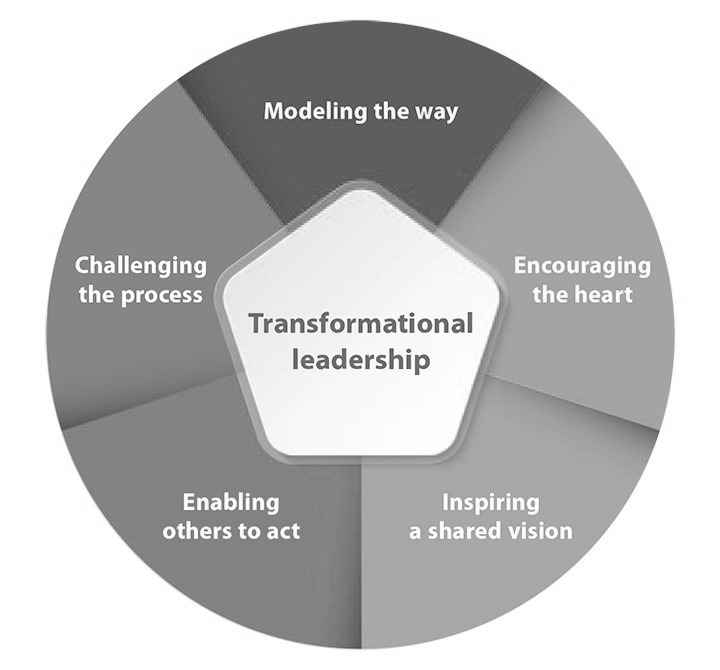
(Source: Cranmer et al. 2019)
Appendix 2: Leadership test
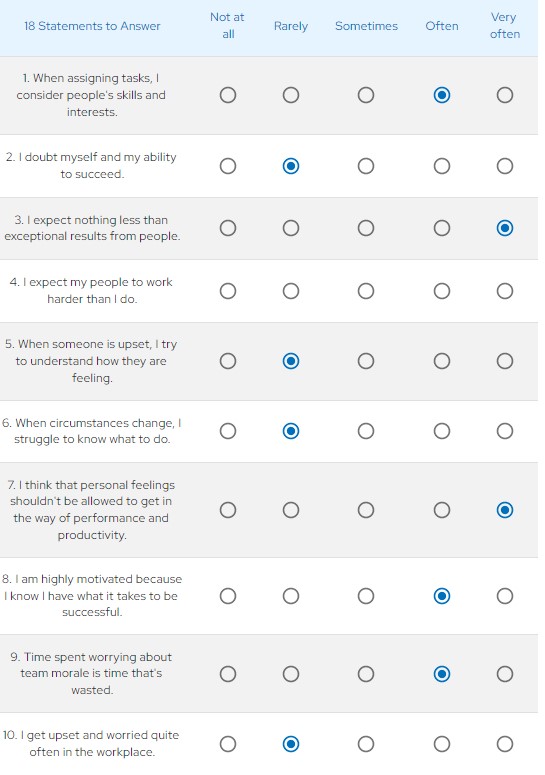
(Source: Mindtools, 2022)
Appendix 3: Result
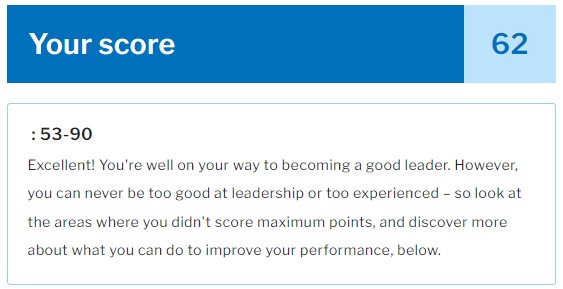
(Source: Mindtools, 2022)
